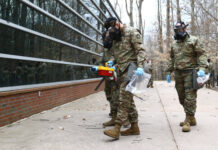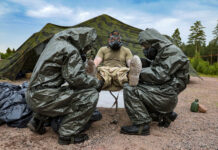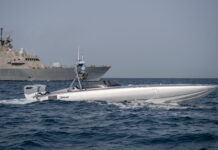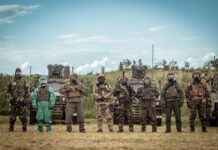Rumours of the demise of the tank are, in fact, premature. Mechanised warfare is occurring on the Russian-Ukrainian front at the time of writing and will likely continue for some time. Given that one of the combatants, Russia, is a nuclear power and historically had stockpiles of chemical and biological weapons, we cannot truthfully say with assurance that the era of chemical, biological, radiological, and nuclear (CBRN) threats is over for good. A natural confluence of CBRN threats and mechanised warfare is the desire to seek protection of combat vehicles from such threats.
Modern armoured fighting vehicles (AFVs) – tanks, reconnaissance vehicles, armoured personnel vehicles, and a panoply of related types of wheeled and tracked combat vehicles, evolved for several reasons. But one of the main historical motivations was to provide not just mobility but protection to modern military forces. Layers of armour protect soldiers from various types of direct and indirect fire. Many, but certainly not all, modern AFVs, have features that protect their crew and/or passengers from chemical, biological, radiological, and nuclear threats. The overall aim of CBRN survivability on the battlefield is to keep the AFVs in the fight, and that usually means keeping the crew safe from harm.
Within the CBRN threat spectrum, only the direct effects of nuclear detonations physically damage the AFV itself. Most of the time, CBRN threats harm the crew or passengers, or contaminate the vehicle so that its utility might be constrained, but do not physically damage the vehicle. Operational constraints might take the form of forcing crew to wear personnel protective equipment, thus degrading operational capability. Alternatively, contamination of an AFV might mean that using it outside a contaminated area would spread the contamination. Imagine a company of tanks driving through contaminated mud and then tracking that mud through a critical road junction or onto a bridge. Or worse, into the back of an aircraft or onto an airfield. In addition, contamination can reduce some specialty capabilities. A recce vehicle, combat engineer vehicle, field ambulance, or armoured recovery vehicle that is contaminated with radiological or chemical hazards might be useless for its specialty role until decontaminated.
There are many approaches to protecting AFV crews and passengers. The passengers are often as important as the crew, as one of the key roles of infantry fighting vehicles (IFVs) and armoured personnel carriers (APCs) are to transport infantry sections and squads, as well as other combatants like sappers or cavalry scouts. While mechanised warfare has gone a long way from considering APCs to merely be taxis for dismounted infantry, part of the raison d’être of such vehicles is to protect the passengers, so we must consider CBRN protection to be part of that purpose.
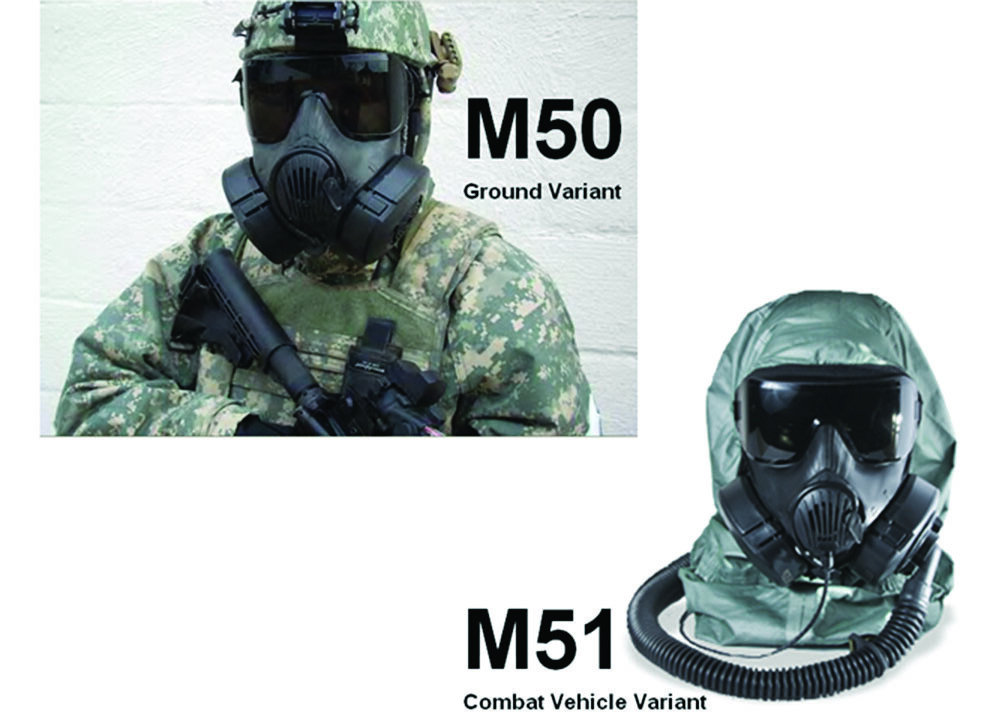
AFV Masks and Suits
At the most basic level, one can achieve a high degree of protection simply by providing the same CBRN personal protective equipment (PPE) to the crew and passengers that the rest of the army uses. For the most part, this is the broad approach to protecting passengers. A mechanised infantry squad in most armies generally has the same CBRN PPE as non-mechanised infantry. It has long been conventional wisdom in many armies that the general-purpose protective masks/respirators (nomenclature varies) are designed primarily around infantry soldiers and their specific requirements. These may not necessarily be optimally designed for use by armoured vehicle crew. For example, a tank crew needs to communicate with each other. This is typically done by headphones and microphones as part of a headset or helmet. Will any of that work if the driver and commander of the tank have to put on an infantryman’s protective mask? In addition, the field of view afforded by an infantryman’s mask may not be ideal for driving. Likewise, aircraft crews face similar issues.
For such reasons, major PPE manufacturers have, for decades, produced product lines of respiratory protection aimed at vehicle crews. These products typically have the requisite communications capability wired into them and are designed to integrate with military optical systems commonly found on AFVs. One example of many is Avon Protection’s FM51 mask. Another was the US Army’s M42 mask, made by ILC Dover, which is still found in service. Numerous comparable masks exist around the world. Compatibility of connections is a problem, however. This might be an issue in a situation like Ukraine, where numerous donors are providing a wide range of equipment.
It should also be noted that protective clothing – suits, boots, and gloves – for AFV crew will have different requirements. The traditional NATO Cold War-era activated charcoal suit may not actually be the safest thing to give to a combat vehicle crew. One of the great killers of AFV crews is fire, and generations of CBRN protective equipment designed for other uses were (and some still are) made of things that will either catch on fire or melt. Needless to say, CBRN protective gear that makes conventional hazards worse than they need to be is not the ideal approach to crew or vehicle survivability. Improvement is clearly evident in this segment of the market. All around, newer designs and technologies have meant that most military CBRN kit is less flammable than the past. In addition, there have been generations of CBRN protective clothing for AFV crews that incorporate flame resistance and fire-retardant capacities. Another useful approach that shows some prospect for future developments is chemical protective undergarments that are designed to fit under existing flame resistant AFV crew uniforms.

Collective Protection
By definition, a tank or other AFV is a confined environment. It is possible to provide CBRN protection to an entire vehicle rather than just give individual protection to the occupants. Traditionally, there have been two major approaches to this – ventilated facepieces and overpressure systems. Ventilated facepieces are the next step up from individual protective masks/respirators. They provide pressurised filtered air through a hose to the crew’s protective masks. As a result, most specialty AFV protective masks are designed with such a hose or to connect to such a system, while retaining a filter in case the crew needs to evacuate or dismount. Such systems have a higher protective factor in most cases, because of the supplied air. On the other hand, there are maintenance and filter-lifespan considerations for the installed hardware.
Many AFVs now operate a more fulsome method of protection, known as variously as collective protection and/or overpressure systems. These systems operate by providing filtered air, at higher pressure than ambient atmospheric pressure, to the interior of the vehicle. These systems entail considerable engineering effort as they have to move a lot of air and need sizeable filters. Furthermore, the whole vehicle design needs to be considered as every gap, port, and hatch needs to be airtight. Overpressure systems are usually maintenance-intensive and, anecdotally, sometimes get neglected as part of ongoing maintenance. It is important to design such systems properly. If not correctly designed and constructed, collective protection systems can be damaged by blast overpressure from explosions.
Readers interested in a more thorough discussion of the hardware and manufacturers within the AFV collective protection segment can find a thorough discussion that this correspondent wrote in issue 4/2018 of this magazine. There are relevant NATO standards in this space to guide manufacturers and procurers, such as NATO Triptych AC/225 and Allied Engineering Publication 54. These standards get much consideration even in non-NATO states. The general market situation has changed only slightly since that was written. Honeywell (USA), Dräger (DE), HDT Global (USA), Nexter (FR), Bioquell (UK), Temet (Finland), and Beth-El (Israel) are only some of the main players in this market space.
Collective protection generates operational challenges as well, as vehicles need to be in “buttoned up” mode to use it. So much as a single open hatch sacrifices all of the effort. Masks, whether connected to a ventilation system on their own or not, and overpressure systems are excellent defences, but they need to be actually used in order to have useful protective benefit. Few tank crews like to drive all wearing masks or train very often to do so. Likewise, if you observe actual mechanised or armoured operations, you will see that AFVs spend much of their operating life operating with hatches open, the driver’s head exposed, and the torso of the vehicle commander emerging from his/her hatch. These are vulnerabilities that all of the available hardware will not mitigate. The biggest issue of collective protection is expense, however. These systems are expensive, and the filters need to be changed regularly, creating recurring costs. Some work has gone into regenerative filters, which will have more initial expense, but far less downstream expense as their service lifetime and associated labour will be much lower.
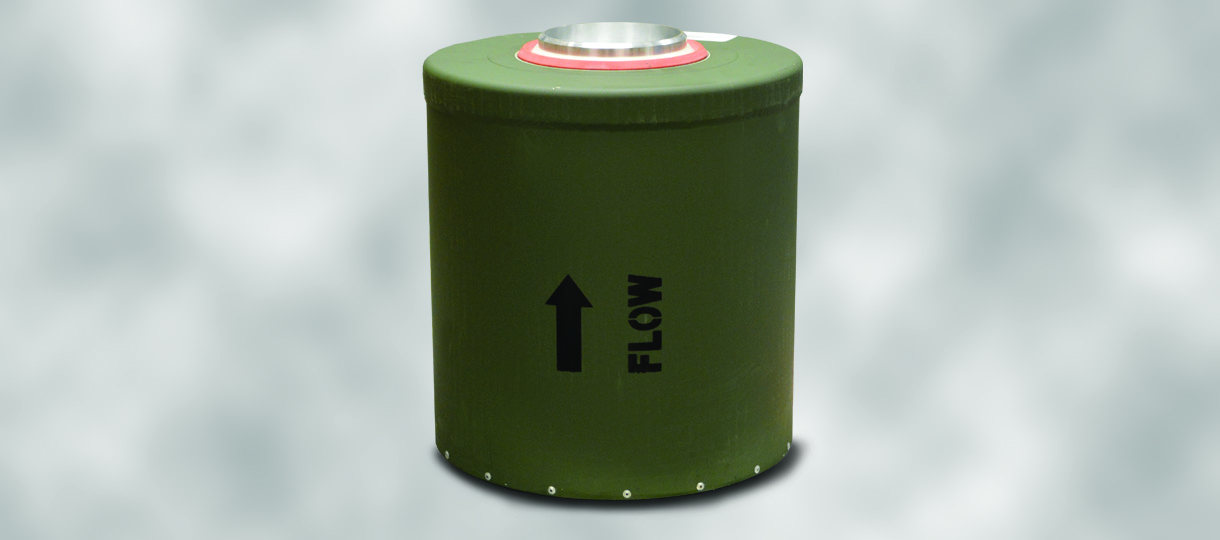
Another aspect of protecting the vehicle as a whole instead of merely protecting the occupants is paint. Some types of CBRN threats, principally the blister agent mustard gas and persistent nerve agents like VX, have an insidious ability to seep into paint and desorb slowly over time, making decontamination more difficult. A persistent hazard can, on some painted surfaces, become MORE persistent, which is troublesome. Decades ago, the US military addressed this by developing CARC – chemical agent resistant coating. Such coatings are expensive, but are now in widespread use. Historically, the US experienced throughput issues when combat vehicles needed to be repainted, as only a handful of facilities were able to apply CARC paint.
Finally, yet another aspect of CBRN protection of AFVs is situational awareness. Chemical and radiological detection now work in real time or near to real time. Military detector systems are getting smaller and cheaper in real terms. Armies that once procured tens of detectors are now procuring hundreds or thousands. At the beginning of this correspondent’s career, CBRN detection on a vehicle was limited to a handful of specialty reconnaissance vehicles. The paradigm was shifted on this by the mass procurement of many thousands of M4-series Joint Chemical Agent Detectors (JCAD – made by Smiths Detection) by the US military. Part of the JCAD programme has been the fielding of power and communications adaptors to mount it on many kinds of vehicles. Some other countries have followed suit and there are now chemical agent detectors on AFVs in a number of countries. Similarly, radiation detection systems hard-wired into AFVs are now widespread around the world.
Nuclear Considerations
At the beginning of this correspondent’s defence career, the prospect of tactical nuclear weapons used on the battlefield was shrinking. Unfortunately, the Russian-Ukrainian conflict has some people talking once again about battlefield nuclear weapons. This current trend makes a brief discussion of AFV survivability in a tactical nuclear environment worthy of discussion. AFVs, and in particular main battle tanks (MBTs) provide a reasonable degree of protection in a tactical nuclear environment. Nuclear weapons provide hazard through a lot of mechanisms, such as blast, heat, prompt radiation, and residual radiation. Of course, a near hit or near miss with even the smallest nuclear weapon provides blast and heat that will shred, tear, flip, or melt any AFV. But the radii of these effects, especially against buttoned-up MBTs is surprisingly modest, particularly when considering smaller tactical nuclear weapons. A nuclear artillery shell fired against a well-dispersed tank battalion may only take out a dozen tanks. With smaller nuclear detonations, the largest radius of casualty-producing effects is made by gamma and neutron radiation, not blast or heat.
Of everything on a modern battlefield, MBTs are the most robust in a tactical nuclear environment, because of their ‘transmission factor’ – the degree of shielding that they provide against gamma and neutron radiation. The thick armour on AFVs greatly increases this transmission factor. Tank armour was once strictly a matter of armoured steel, which is not bad at attenuating gamma rays but not particularly great at blocking neutrons.
However, tanks now have composite armour, some of the components of which may serve to attenuate neutrons. For example, Russian MBT composite armour is believed to contain boron, which has useful shielding properties. AFV hardening against nuclear threats is classified in the USA but the paper trail clearly references classified specifications for nuclear hardness being circulated as part of major procurements. Several QSTAGs – Quadripartite (US, Canada, Australia, UK) Standardisation Agreements – are known to exist in the nuclear hardening field.

A Systemic Approach
AFV survivability on the CBRN battlefield also has aspects broader than the physical hardening of the vehicle and the provision of PPE to the crew and passengers. The underlying objective in CBRN defence in army operations is to preserve the ability to continue military operations. How an army deals with the CBRN threat at a broader level, from the top-down, is also relevant to the CBRN survivability of AFVs, their crews, their passengers, and preservation of fighting ability. Two broader approaches are contamination avoidance and decontamination.
So-called “contamination avoidance” developed out of Cold War era NATO doctrine and procedures. It is, broadly, a large toolbox of tactics, techniques, and procedures (TTPs) to calculate and estimate where contamination might be found on the modern battlefield. By developing and implementing an army-wide network of reporting of CBRN attacks, augmented by detection and CBRN reconnaissance, CBRN specialists in battalion, brigade, or divisional headquarters can use field reports and weather data to make educated estimates as to where CBRN hazards are likely to impact upon military operations. The idea, in principle, is that defending forces can take action to reduce their exposure and offensive forces can avoid areas of known, likely, or suspected contamination. The end result, in an ideal situation, would be that many forces, including AFVs would not be sent in to contaminated areas unless there was a compelling need to do so. My own experience, learning how to practice contamination from bottom-up, is that an awful lot of things need be done correctly, and a lot of information needs to be collected and processed for contamination avoidance to work at all. Whether it will work on a modern battlefield in a CBRN environment or not is anyone’s guess, as it has never been tested. In theory, NATO-standard contamination avoidance doctrine can reduce the need for AFVs to have protection. However, in practice, this is a weak branch to hang a heavy coat upon.
Contamination avoidance represents the ‘glass half-full’ approach in modern CBRN defence, by hoping that rather a lot of the force is going to be able to avoid CBRN hazards by means of sophisticated situational awareness. The ‘glass half-empty’ counterpart is decontamination. Military decontamination doctrine assumes that some soldiers and systems are going to get dirty. Troops, equipment, and systems will need varying levels of decontamination in order to stop being a hazard to life and health, to stop the spread of contamination, and to allow fighting capability to get back into the battle.
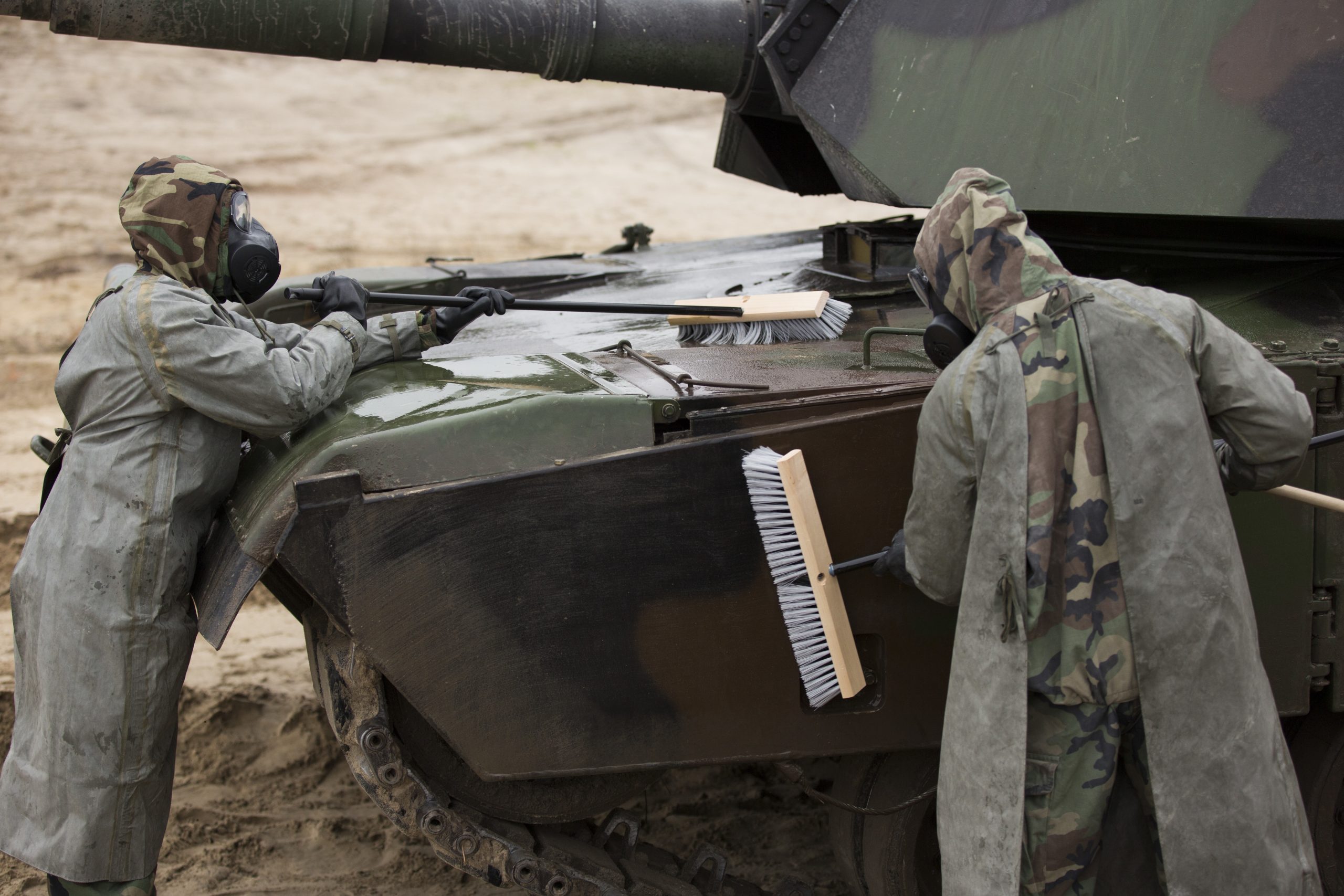
This means that an important part of CBRN survivability of AFVs is the existence of robust decontamination capability and capacity. CBRN decontamination has been discussed at length in several previous articles in this magazine, but it needs to be viewed as an integral component of protecting AFVs and their crews from CBRN threats. The sooner and more effectively a tank or APC can be decontaminated after an attack, then more the threats to its crew and occupants are reduced and the risk of spread of contamination is reduced. Decontamination of military vehicles is serious business, and a large subsector of military CBRN defence. It was discussed in detail in this magazine in issue 1/2020, for those interested in a deeper dive.
In sum, there are a number of valid AFV CBRN protection approaches, all of which come with their own strengths and weaknesses. These have been summarised in the table at the bottom of the page.
The Way Forward?
Looking to the future, is there an end to the need for CBRN protection of AFV crews? There are several ways of seeing how that may come about. One is continued efforts to make sure that the use of CBRN weapons is a thing of the past. Diplomacy, arms control, and non-proliferation efforts have actually done a lot of hard work to see that the peril of CBRN warfare is only of historic interest. However, we must be realists and see that such an objective, while worthy, may be forever just beyond our reach. A more pragmatic approach may be in unmanned systems. Are we getting to the level of sophistication when a tank needs no human crew? AFVs with the humans engineered out of the interior would be far more robust and survivable in CBRN environments. This is food for thought for future discussions. It will be interesting to see where the AFV market is in ten years.
Dan Kaszeta






![Nanotechnology: Threats and prospects in the CBRN sector US Airmen from the 426th Air Base Squadron conducting chemical, biological, radiological and nuclear (CBRN) training at KNM Harald Haarfagre, Stavanger, Norway, on 20 May 2025. [USAF/A1C Adam Enbal]](https://euro-sd.com/wp-content/uploads/2025/09/CBRN-Norway_USAFA1C-Adam-Enbal-Kopie-218x150.jpg)
![MGCS status update The KNDS EMBT-ADT 140 technology demonstrator on display at the Eurosatory 2024 exhibition. This model featured the 140 mm configuration of the ASCALON gun. [Mark Cazalet]](https://euro-sd.com/wp-content/uploads/2025/08/EMBT-EDT-140_Mark-Cazalet-Kopie-218x150.jpg)
![Danish acquisition programmes Danish soldiers training in Kangerlussuaq, Greenland, during June 2025. [Forsvaret/Rebekka Gimm]](https://euro-sd.com/wp-content/uploads/2025/07/Danish-Soldiers-in-Greenland-Kopie-218x150.jpg)
